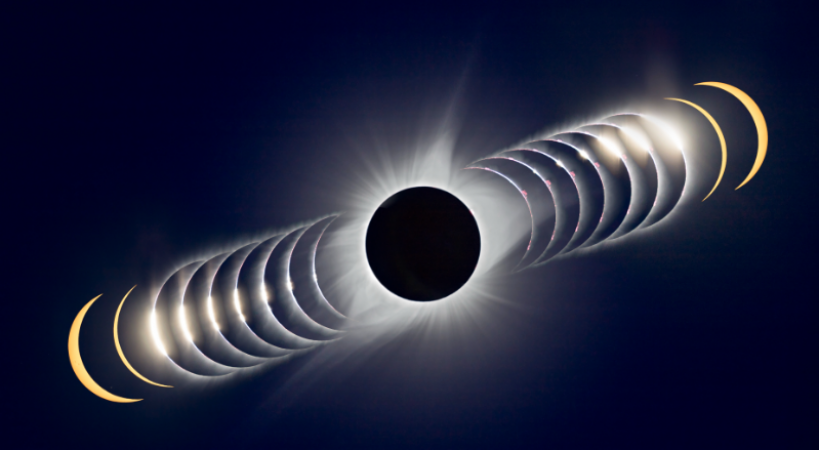
USA: We will witness a rare hybrid solar eclipse on April 20. It will be the year's first solar eclipse. According to reports, there will only be seven hybrid solar eclipses in the next century.
The upcoming event will be one of them, which makes it even more unique. You may witness either a total or annular solar eclipse, depending on where you are.
According to NASA, there are four different kinds of solar eclipses: total, partial, annular, and hybrid. A total solar eclipse occurs when the Moon totally obscures the Sun.
Also Read: US Navy launches first drone through Hormuz Strait
The corona, or outer atmosphere of the Sun, will be visible from places along the path of the eclipse. The Moon is further from Earth during an annular eclipse, so it does not completely block out the Sun.
Because the Sun, Moon, and Earth are not perfectly aligned, only a portion of the Sun will be completely obscured during a partial solar eclipse, giving the appearance of a crescent.
Due to the curvature of the Earth, a hybrid solar eclipse replaces an annular and a total eclipse.
Only 4.8% of all solar eclipses are hybrid, or annular-total eclipses, which are extremely rare.
Also Read: Vladimir Putin travels infrequently to frontline regions of Ukraine
According to NASA, on April 20, a hybrid solar eclipse will cross the Indian and Pacific Oceans and be visible from Australia and parts of southeast Asia.
Unfortunately, India won't be able to see the hybrid solar eclipse.
On April 20, the unusual event will start at 7:06 am IST and end at 12:29 pm IST.
South of Timor-Leste in Southeast Asia, the Timor Sea will be where the solar eclipse's maximum point will occur.
For 76.1 seconds, the Sun will be completely obscured, but the eclipse's path will only be about 48 kilometres wide.
The total solar eclipse will be visible from Exmouth, Western Australia, for about 57 seconds.
The unusual hybrid solar eclipse can also be viewed online. You can watch the event live tomorrow by going to timeanddate's YouTube channel.
You can watch the event on NASA's YouTube channel because it will also be broadcast from Australia.
Given that the following hybrid solar eclipse won't happen until 2031, you might not want to miss watching this spectacle.
Also Read: Ship inspections for the Black Sea grain deal have resumed in Ukraine.
An hour before and an hour after the annular-total eclipse, there will be a partial solar eclipse. Parts of the Indian and Pacific Oceans, all of Australia, all of Indonesia, northern New Zealand, and a small portion of Antarctica will all be able to see it.